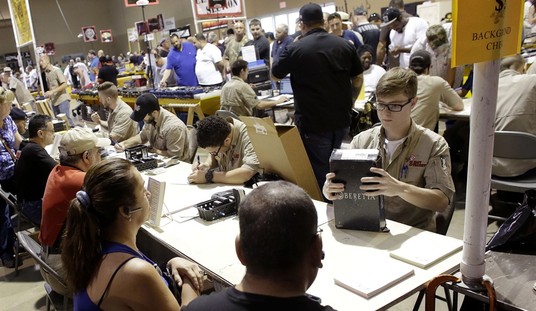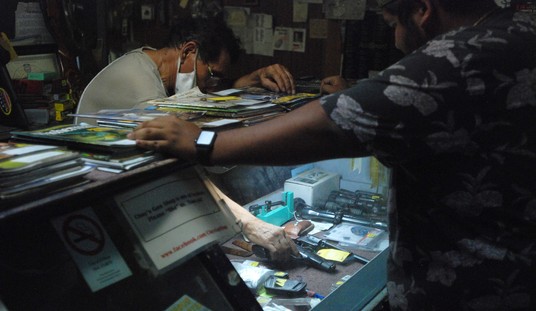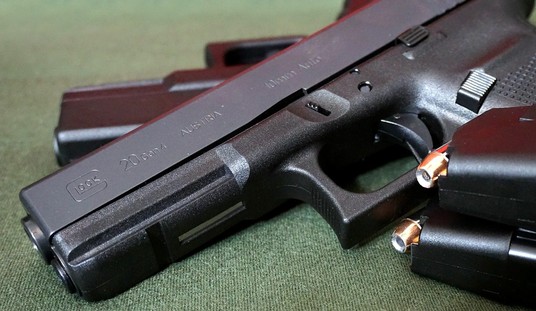More than 35,000 attendees and 600 exhibitors come to Washington Oct. 20 to Oct. 24 for the annual meeting of the largest advocacy group for the Army on Capitol Hill and in local communities.
“I became active as a member of the Association of the United States Army (AUSA) while I was on active-duty,” said retired Army Lt. Gen. Roger G. Thompson Jr., the AUSA vice-president for memberships and meetings “I kept that membership through my retirement in 2000.”
Around the time of his retirement, Thompson was made aware that the job of vice-president for meetings and membership was open, he said. “I interviewed for it and got it.”
It is a labor of love, he said. “It’s a good way to give back to the Army, which gave so much to me—and it’s also a great way to support soldiers and families.”
The AUSA is made up 125 chapters, with members who share the same mission, said the general, who as a young man commanded artillery batteries in Vietnam.
“The Army could never do what we are able to do, and be able to touch as many people in such a short period of time, across a broad spectrum of issues,” he said.
“What I like to say about the role of the AUSA and the annual meeting is that our job is to produce a quality platform onto which the Army, elected officials, family members, companies that want to support the Army, where they can all come together in a neutral environment, where interaction can occur regarding Army capabilities, Army requirements and Army issues,” he said.
Another event, the Army Ten-Miler race, this year run Oct. 21, is a official Army event that begins and ends at the Pentagon, that folds in nicely to the AUSA meeting, Thompson said. Trophies for the race are presented at a dinner at the meeting and there is the traditional pasta dinner on the eve of the race held as part of the meeting.

“Here we are in Washington, D.C., just a couple or three miles away as the crow flies from the Pentagon, the Army leaders can come over here and they can talk to thousands of people,” he said.
“There are 109 press organizations and all sorts of elected officials will be here, and they didn’t have to pay anything for it, except for some travel expenses and to pay for their Army exhibit, which is going to be really worth seeing,” he said.
At the same time, the AUSA assumes all the financial risk and takes care of all the planning and logistics, he said. “For the Army, the bang for the buck is immeasurable.”
The meeting is an opportunity for junior soldiers, juniors NCOs and junior officers to mingle with leaders that would never have a chance to meet whether at garrison or deployed, he said.
The Sergeant Major of the Army has special seminar for enlisted soldiers at the meeting, in addition to the awarding of the NCO of the Year and the Solider of the Year for the entire Army are announced at a dinner at the meeting hosted by the SMA, he said.
“At the meeting, the solider gets to give feedback to the potential manufacturers of equipment or service providers to tell them what works and what doesn’t work,” he said.
“The soldier gets to see the art of the possible for their future is,” he said. “I have talked to many soldiers and family members, too, as they were leaving the meeting, and they told me: Now, I understand so much more, because they’ve been the meeting, they have heard the leaders, and now they understand what’s going on.”
The general said he could go on a long time discussing the different ways attending the annual meeting him as a senior Army leaders.
“Once I had been involved as a colonel in an organization that created logistics doctrine, a formulation of how the Army was going to support itself in the next several years,” the West Point graduate said.
Thompson said he created a fulsome and broad doctrine to support the Army, but it would have taken him three times as long, if he had not attended the event.

“The meeting is an intellectual event,” he said. “This year, there will be 11 different military forums that will discuss topics that are absolutely timely,” he said.
“We like to say it’s a professional development forum, it’s where soldiers, junior, senior, enlisted and officers—and they come out of here with a lot more in their head,” he said.
“There are over 60 scheduled events in a three-day period,” he said.
“For example, the Army will talk about itself and how it sees itself in this 10th or 11th year of war,” he said. Other subjects will be: resilience for warriors and families, cyber-security, the working relationship between conventional Army and Special Operations forces and there will be a panel discussing the Army’s realignment.
There will also be four family forums, where senior Army leaders will meet with family members to relate to each other the challenges facing today’s Army and today’s Army family, he said.
Thompson said a panel at one the panels will be made up of Army children.
“The last 10 years has seen an incredible amount of growth in the size of the annual meeting,” the general said.
Prior to 2003, the annual meeting was held at two large hotels in North West Washington, he said. When the city’s new convention center opened, the AUSA stepped up to reserve space to hold the meeting there.
The Walter E. Washington Convention Center is a remarkable facility that allows plenty of space for exhibitors, break-outs sessions, dinners and its design comfortably handles the traffic flow created by the crush of attendees, said the general, who in the later part of his career worked in logistics, including a final tour as the Director of the Army Budget.
With the new venue, the constituents of the meeting responded, he said. “We were very pleasantly surprised with the number of exhibitors and attendees grew, and grew dramatically.”
Ten years there were roughly 10,000 attendees and 80 to 100 exhibitors, he said. “Now, our annual meeting for the last two years has had an attendance of just over 35,000, and we will have an excess of 600 exhibits.”
Because of budget concerns, the Army will not have the presences at the AUSA annual meeting it has had in the past, but it will still be an impressive showing, he said.









Join the conversation as a VIP Member